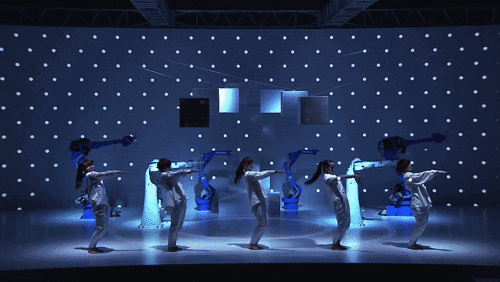Team Up with Dancing Drones
This film uses drones, 3D capture and performative dance to create a sense of alternating between real and digital worlds.
The music video, “Cold Stares”, is a collaboration between Daito Manabe and Los Angeles beatmaker, Nosaj Thing featuring Chance The Rapper in Nov 2015. The dance piece by two dancers was produced to express the message in the lyrics—their mental situation and conflict searching for reason of being and memories, wandering along the border between reality (the real world performed by people) and illusion(the delusional world of Computer Graphics Effect).
The resulting film is both jarring and seamless, with the dancers shifting between real and virtual realities so quickly that the line between the two worlds vanishes. “We are constantly experimenting and thinking of ways to create a new form of dance performance by utilizing technologies such as machine and deep learning,” says Daito Manabe. There are two kinds of drone movements, a motion produced by tracking a dancer’s movements and an artificial motion operated on the software. At first, dancers had to be trained to interact with the drones because they could not predict how they would move, but eventually they were able to dance with the drones as closely as 10cm away from them. As my aspect, this piece was not only a meditation on how we see each other and how machines see us, but also a double dance between human and machine.
Additionally, just like Jon Cates said:
They might be glitched and imperfect. But still they are functional or functioning in one way or another systematically.
Daito Manabe successfully combined minimal polygon and glitch art to demonstrate the virtual. Thus, audience could easily differentiate between the reality and illusion. By using drones, what was virtual can now exist as physical objects, this concept was that Manabe also wanted to deliver. In this 3 min performance, we just like wander along a virtual-to-reality chaotic space, sometimes being a touchable distance to the dancers, but sometimes living in the three-dimensional space. In Daito Manabe’s works, you hardly see any speech or words, he is convinced that music or number always express widely and precisely.
If I had wanted to express myself with words, I probably would have become a singer or a writer. The reason I chose music as the medium for expression was precisely because I didn’t want to use words. That is because I was attracted to the universality of things that aren’t words.
More information and details of it: The interview & Offical Website.


More Daito Manabe’s works with drones, dancers and lights:


